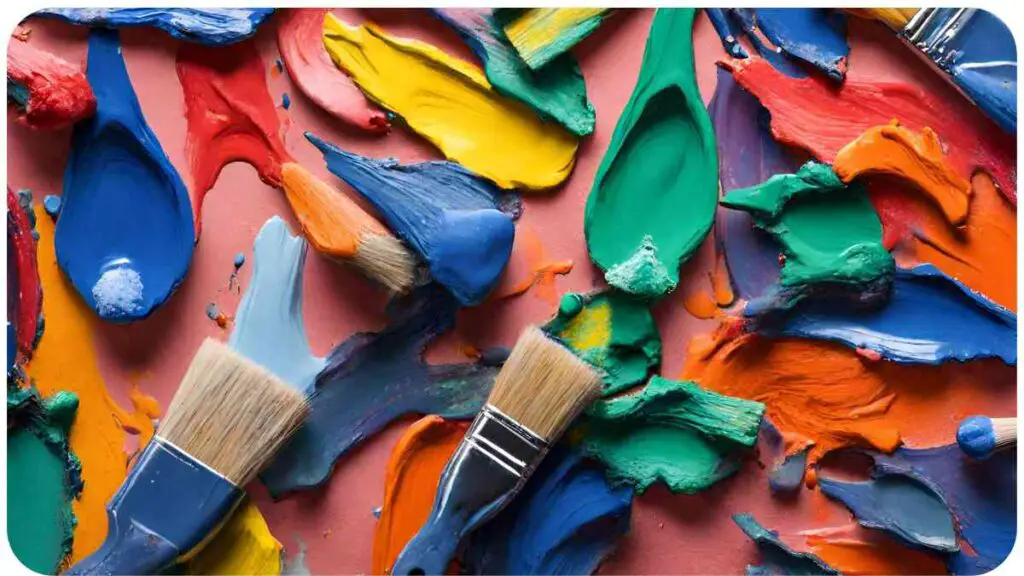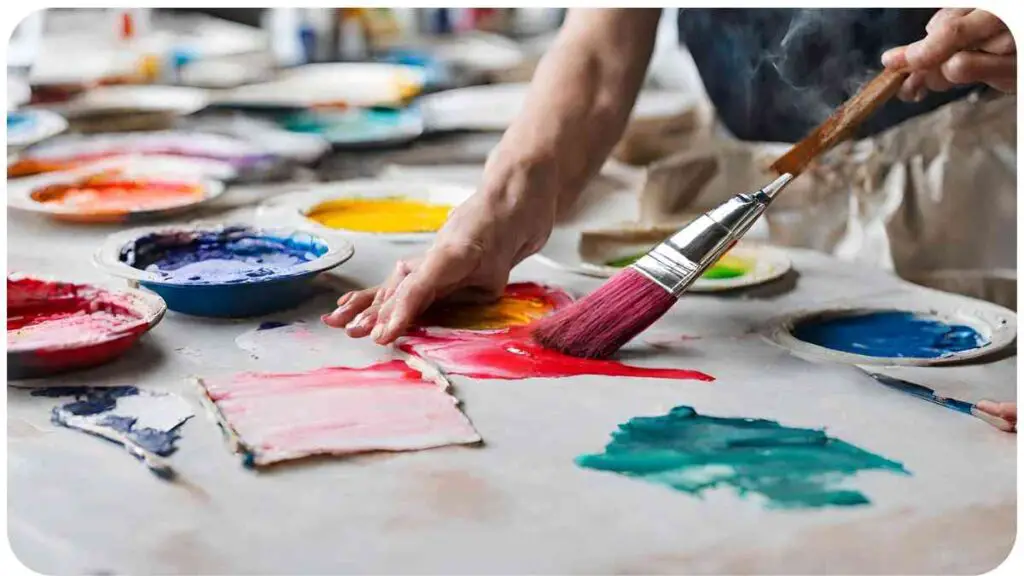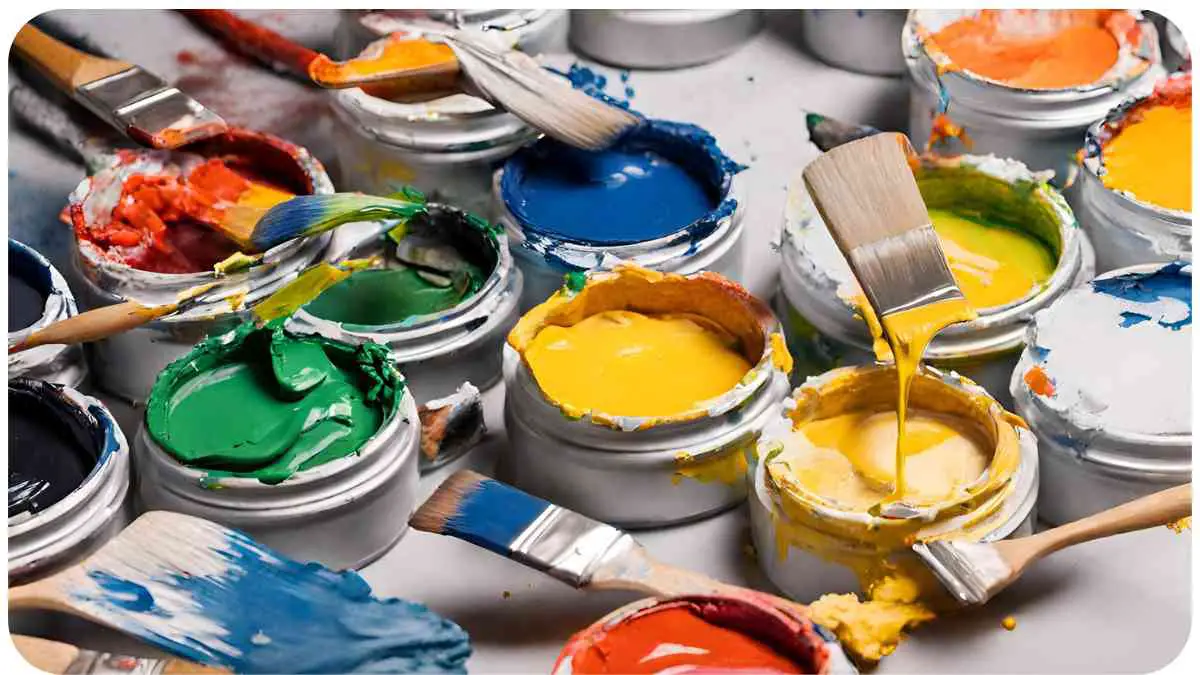Acrylic paint is a versatile medium loved by artists for its quick drying time, but what if your paint is drying too fast? In this article, we’ll explore why acrylic paint dries fast and how you can slow it down to gain more control over your artwork.
| Takeaway |
|---|
| Tips for Slowing Down Acrylic Paint Drying |
| Use acrylic paint retarders to extend working time. |
| Experiment with different painting techniques, such as thinning out paint layers or using glazing. |
| Adjust ambient conditions, such as temperature and humidity, to control drying time. |
| Explore alternative additives or mediums designed to slow down acrylic paint drying. |
| Learn from additional resources and tutorials to refine your techniques and achieve desired results. |
2. Understanding Acrylic Paint Drying Time

Acrylic paint dries through evaporation, as the water or other solvent in the paint evaporates, leaving behind the pigment and binder. The speed at which acrylic paint dries depends on various factors, including humidity, temperature, and thickness of application.
When faced with a dried-out paint marker, don’t fret! Learn effective troubleshooting tips to revive it and keep your artwork flowing smoothly.
Table: Factors Affecting Acrylic Paint Drying Time
| Factor | Influence |
|---|---|
| Ambient Temperature | Higher temperatures lead to faster drying |
| Humidity | Low humidity speeds up drying; high humidity slows it down |
| Thickness | Thicker layers take longer to dry than thin washes |
| Air Circulation | Adequate ventilation can accelerate drying |
3. Factors Affecting Acrylic Paint Drying Time
Acrylic paint drying time can vary significantly depending on several factors. Understanding these factors can help you better manage the drying process and achieve the desired results in your artwork.
Ambient Temperature
The temperature of your painting environment plays a crucial role in acrylic paint drying time. Higher temperatures generally lead to faster drying times, while cooler temperatures slow down the drying process. If you’re working in a warm studio or during the summer months, you may notice your acrylic paint drying more quickly than usual.
Humidity
Humidity levels can also impact how fast acrylic paint dries. Low humidity speeds up the drying process, as moisture evaporates more quickly from the paint film. Conversely, high humidity slows down drying, as there is more moisture in the air to inhibit evaporation. If you live in a humid climate or are working in a damp environment, you may find that your acrylic paint takes longer to dry.
Choosing the perfect brush is essential for any painting endeavor. Explore a comprehensive guide on brush selection to elevate your artistic creations to new heights.
Thickness of Application
The thickness of the paint layer can significantly affect drying time. Thin washes of acrylic paint will dry much faster than thick impasto layers. This is because thicker layers of paint take longer for the moisture to evaporate completely. If you’re looking to speed up drying time, consider applying thinner layers of paint or using techniques like glazing.
Air Circulation
Proper ventilation and air circulation can help accelerate the drying process. Adequate airflow allows moisture to evaporate more efficiently from the paint surface, reducing drying time. If you’re working in a poorly ventilated space, consider using fans or opening windows to improve air circulation and speed up drying.
Understanding how these factors influence acrylic paint drying time can empower you to adjust your painting environment and techniques accordingly, ensuring optimal results in your artwork.
4. Tips to Slow Down Acrylic Paint Drying

If you find that your acrylic paint is drying too fast for your liking, don’t worry! There are several techniques and products you can use to slow down the drying process and extend your working time.
Using Retarders
Acrylic paint retarders are additives specifically designed to slow down the drying time of acrylic paint. These retarders work by delaying the evaporation of water from the paint, allowing you more time to blend and manipulate the colors on your canvas. Retarders are available in various formulations and can be mixed directly into your acrylic paint or applied to the surface before painting.
Are your chalk pastels breaking too often? Discover the reasons behind this issue and effective solutions to ensure your artwork remains intact and vibrant.
Adjusting Ambient Conditions
Controlling the temperature and humidity of your painting environment can also help slow down acrylic paint drying. If you’re working in a hot and dry environment, consider using a humidifier to increase moisture levels in the air. Similarly, lowering the temperature in your studio or using air conditioning can help extend the drying time of your acrylic paint.
Employing Different Painting Techniques
Changing your painting techniques can also affect acrylic paint drying time. For example, if you typically work with thick layers of paint, try thinning them out or using a more fluid consistency. Thin washes of paint will dry much faster than thick impasto layers. Experimenting with different application methods, such as dry brushing or glazing, can also help extend your working time.
After indulging in a paint pour session, follow this quick and easy guide to effortlessly clean up your workspace, ensuring a tidy environment for your next artistic endeavor.
Conclusion
By incorporating these tips into your painting practice, you can effectively slow down the drying time of your acrylic paint and gain more control over your artwork. Whether you choose to use retarders, adjust ambient conditions, or experiment with different techniques, don’t be afraid to explore and find what works best for you.
With a little experimentation and patience, you’ll discover how to achieve the perfect balance between workability and drying time in your acrylic paintings.
Extend the lifespan of your art tablet’s battery with these invaluable tips and tricks, allowing you to focus on your creative process without worrying about power interruptions.
Further Reading
Here are some additional resources where you can learn more about slowing down acrylic paint drying:
- How to Slow Dry Time & Blend with Acrylics: This comprehensive guide offers tips and techniques for slowing down acrylic paint drying time and achieving smooth blends in your artwork.
- 7 Ways to Stop Acrylic Paint Drying Too Fast: Discover seven practical strategies for preventing acrylic paint from drying too quickly, including adjusting ambient conditions and using acrylic mediums.
- How to Stop Acrylic Paint from Drying Too Fast: This article explores various methods for extending the working time of acrylic paint, from using retarders to altering painting techniques.
FAQs
Have questions about slowing down acrylic paint drying? Check out these commonly asked questions:
How does acrylic paint drying time affect my artwork?
Acrylic paint drying time can impact your painting process, affecting how you blend colors, create textures, and add details to your artwork. Slowing down drying time gives you more control over your painting techniques and allows for smoother transitions between colors.
What are acrylic paint retarders, and how do they work?
Acrylic paint retarders are additives that slow down the drying time of acrylic paint. They work by delaying the evaporation of water from the paint, giving you more time to work with the colors on your canvas without worrying about them drying too quickly.
Can I use water to extend acrylic paint drying time?
While adding water can help extend the working time of acrylic paint to some extent, it may also dilute the paint’s pigment and affect its adhesion and durability. It’s generally more effective to use acrylic paint retarders or other specialized additives designed for this purpose.
How can I adjust ambient conditions to slow down acrylic paint drying?
Controlling the temperature and humidity of your painting environment can help slow down acrylic paint drying. Lowering the temperature and increasing humidity levels can extend the working time of acrylic paint, allowing you more time to manipulate the colors on your canvas.
Are there any alternative techniques for slowing down acrylic paint drying?
In addition to using acrylic paint retarders and adjusting ambient conditions, you can also experiment with different painting techniques to slow down drying time. For example, using thin washes of paint or applying paint in thin layers can help extend working time while achieving unique effects in your artwork.

Hellen James is the creator of Unified Crafts and has been crafting since she was a kid accompanied by her mom to the craft store, where she was free to choose whatever ignited her imagination.

